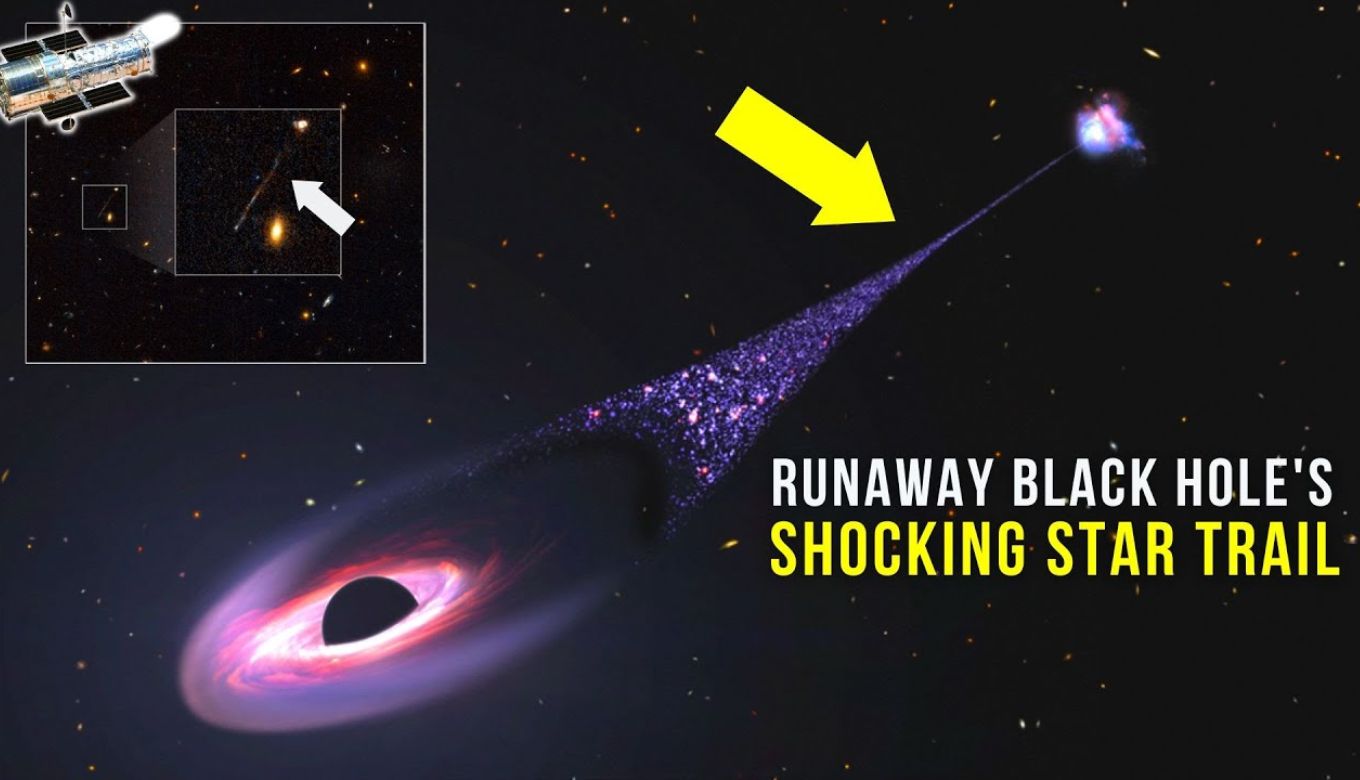Universe a full of mystery and fascination, where you can find new and exciting things which you have never seen before
Runaway black hole are the first fascinating phenomenon in the universe that was seen by Hubble Space Telescope recently.
It is accidentally captured by NASA’s Hubble telescope but nothing like it has ever been seen before.
The runaway galaxy traveling so fast in our space that it could travel from Earth to the moon in 14 minutes.
The weight of this supermassive black hole is as much as 20 million suns. It is moving with so much fast speed on the galaxy that it is leaving a trail of stars behind. This runaway black hole is forming a star as it moves forward at a fast pace.
But how it formed the stars as it moves forward in space because usually black hole gobble up the stars.
How is Runaway Black Hole Making Stars?

This Hubble Telescope captures unique images and thought it was the image artifact. But it is actually a young trail of blue stars and a black hole was ejected from the galaxy at the upper right.
Credits: NASA, ESA, Pieter van Dokkum (Yale); Image Processing: Joseph DePasquale (STSc)
Runaway black hole leaving a trail of stars behind it. Rather than gobbling up the stars that are coming it’s way, it actually takes a different turn.
Runaway supermassive black hole is moving so fast in the intergalactic space, that it is actually plowing into gas in front of it and triggering a new star formation.
Peter van Dokkum of Yale University in New Haven said “ “We think we’re seeing a wake behind the black hole where the gas cools and is able to form stars. So, we’re looking at star formation trailing the black hole, We think we’re seeing a wake behind the black hole where the gas cools and is able to form stars. So, we’re looking at star formation trailing the black hole”
“Gas in front of it gets shocked because of this supersonic, very high-velocity impact of the black hole moving through the gas. How it works exactly is not really known”
You can see in the images at the other end of the supermassive black hole a remarkably bright knot of ionized oxygen. Researchers believe the fast motion of a black hole causes gas to be shocked, and heated, and radiation of the black hole causes compression and formed the star.
Also Read: Belize Coral Reef Risk: NASA Scientists Use Satellite Data To Protect
How this Runaway Supermassive Blackhole Originated?

Credit: NASA’s Goddard Space Flight Centre
The researcher Van Dokkum said in his investigation that it is an accidental finding, and he was looking for globular star clusters in a nearby dwarf galaxy but when he noticed the streak, he thought that it is an image artifact of the telescope. But it is actually a different thing from what we called a runaway black hole. It is formed
- This runaway black hole formed from the collisions of supermassive black holes.
- The first two galaxies merged perhaps 50 million years ago, which brought together two supermassive black holes at their centers.
- Then another galaxy came along with its supermassive black hole and the three whirled up and create instability.
- One of the black holes moved away from the other two black holes, and then it moves freely with its supersonic speed in the intergalactic space.
But the fact is the black hole is not active in the galaxy’s core. NASA’s James Webb Telescope and the Chandra X-ray Observatory will further do the observation.
NASA will use the upcoming Nancy Grace Roman Space Telescope as a survey telescope to find more of these rare “star streaks” elsewhere in the universe.



